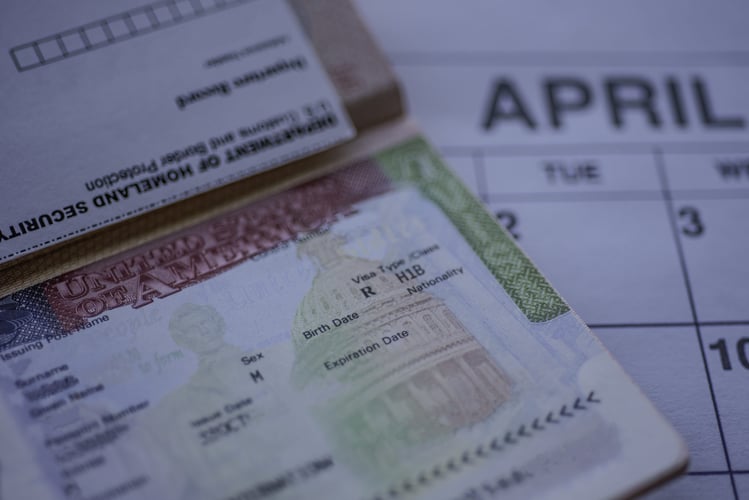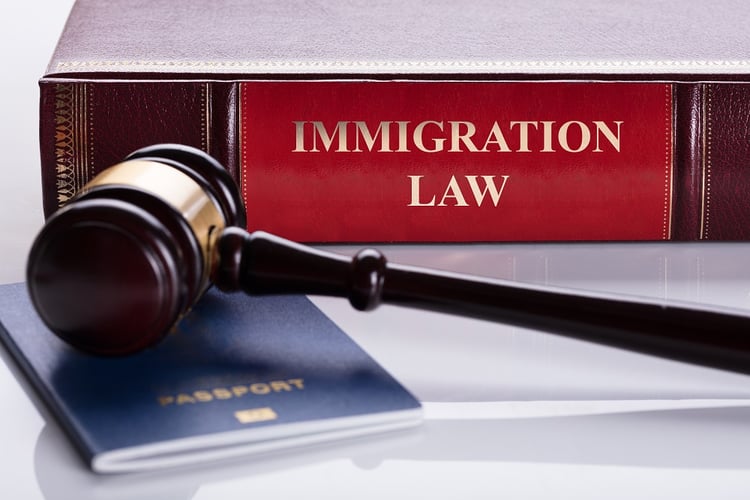
Keeping your Employment Authorization Documents (EADs) current is an ongoing process. You need to be prepared to renew your EAD before the expiration date. More commonly referred to as a “work permit,” starting an application or renewing expired (or soon-to-be-expired) EAD paperwork is often confusing for immigrants seeking work authorization, as well as employers who are sponsoring non-U.S. citizens to work in the U.S.
With the current backlog of EADs, there’s a danger that you or your staff could fall out of status if you’re not proactive in managing and updating your paperwork.
What are Employment Authorization Documents?
To apply for EAD renewal or to start the process, the applicant needs to complete and file form I-765 with U.S. Citizenship and Immigration Services (USCIS). The application or renewal process is largely the same.
You must disclose the reasons for filing, which include these options:
- EAD Renewal
- To replace lost, damaged, or stolen EAD
- Initial permission to work in the U.S.
If you are filing for renewal, you must also submit a copy of your current EAD. You also need to provide supporting documents when you file your I-765. Those are typically copies of:
- Your current EAD
- Your I-94 (including a printed copy of an electronic I-94), your passport, and/or any other valid travel documents
- Two identical passport photographs
- Proof of eligibility (eg. your I-485 receipt notice if you have a pending adjustment of status (AOS))
- Valid government-issued identity documents
When you file, you also need to pay a $410 filing fee. Some individuals who could be exempt from that fee (note this is a partial list and may change subject to U.S. law and USCIS regulations) include:
- Individuals who had their removal proceeding suspended
- Personnel working for NATO and other international organizations
- Temporary residents with deferred Enforcement Departure status
- Individuals who successfully request a fee exemption based on economic hardship or illness (note the fee waiver is a separate process with additional paperwork and could also require supporting documentation)
Completing the application correctly is critical.
Even if you make an honest mistake filling out the paperwork (or fail to provide required documentation), your application could be denied without a refund of your filing fee.
Who Can Apply for an Employment Authorization Document?
NOTE: If you are already a permanent legal resident (a Green Card holder), your Green Card is proof of work authorization; you do not need to apply for work authorization documents to hold a job in the U.S.
There is a long, varied list of people who can apply for a work permit in the U.S. That list includes:
- K-1 fiancé visa holders and spouses of visa holders
- Asylum seekers or AOS grantees
- Individuals granted Temporary Protected Status (TPS) or Deferred Enforced Departure (DED)
- F-1 students who are undergoing “economic hardship”
- F-1 students applying for optional practical training (OPT)
- And more
For a current list of EAD eligibility, we recommend you speak with your immigration attorney or review the EAD filing instructions from the USCIS available here.
If you are visiting the U.S. on a tourist visa (B-1) or lack lawful status, absent a separate eligibility basis (as outlined above) USCIS will not grant you permission to work in the U.S.
You do not need a current job offer to apply for a work permit/file your EAD. Similarly, prior petitions are not required for employers (unlike a work visa). Please note that once you are granted a work permit, you may change employers since a work permit obtained through this process is not employer specific. EADs are not salary dependent, and you do not need to satisfy minimum education requirements to apply, either.
When Should You Review Your EAD?
You should always know precisely when your work permit expires. The expiration date is printed on the card itself. You can begin applying for renewal up to four months (120 days) before the expiration date.
How Long Does the Process Take?
In previous years it could take as long as 90 days for the USCIS to process your application. With current delays, it can take much longer, sometimes a year or more. As such, you should begin the renewal process as soon as you can based on the expiration date on your work permit. You can track your application process on the USCIS website.
If the process is delayed, you could be issued an interim card by presenting the valid paperwork at a local USCIS field office.
How Long Are Work Permits Valid?
The effective duration of the EADs varies depending on the individual situation. Most of the time, the USCIS issues an EAD for a period of one year with an option for renewal.
However, the initial EAD could be as long as two years (frequent for DACA recipients). Those periods are more commonly issued to AOS applicants and asylum applicants. Some work permits with a two-year duration also need approval of an I-140 petition.
Have Other Questions About Applying for or Renewing Your EAD/Work Permit?
Applying for a work permit or ensuring that you submit your EAD renewal correctly is cumbersome, confusing, and often burdensome. Individuals not familiar with the ins and outs of getting permission to work in the U.S. often need advice on how to submit documentation, appeal or extend your immigration status, and so forth.
The experts at Novo Legal are familiar with every aspect of immigration law, including new challenges or rules immigrants and non-permanent U.S. residents have to address.
No matter how far along you are in the application process, contact us today for guidance.
The information on this website is for general information purposes only. Nothing on this site should be taken as legal advice for any individual case or situation. This information is not intended to create an attorney-client relationship.



